Affiliate disclosure: This post may contain affiliate links. Please see our Privacy Policy.
Tell a child that marshmallows grow in the garden, and they’ll be much more excited about weeding chores. The truth is, marshmallows used to grow in the garden, and that’s where the marshmallow plant (Althaea officinalis) gets its name. The roots of this herb contain mucilage which was originally used to thicken marshmallows, and these days gelatin is used instead.
It’s a shame because those traditional marshmallows were more than just sugar bombs, they were potent herbal medicine for treating all manner of respiratory issues. If a spoon full of sugar helps the medicine go down, a few herbal marshmallows are even better.
You can still grow your own marshmallow root at home and add it to homemade marshmallows, or you can simply let it add a splash of beauty to your garden. Either way, the bees will thank you, as just like young children, they have a particular fondness for marshmallows…the flower, not the candy.
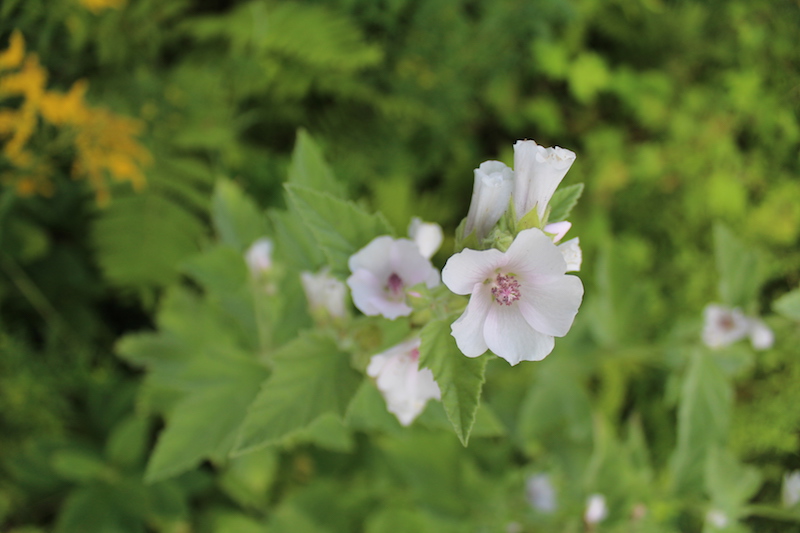
Marshmallow is an incredibly easy herb to grow, and it’s thrived even under conditions of benign neglect in my garden. I started marshmallow seeds (along with a dozen other herbs) in a flurry of nesting activity right before my daughter was born.
Of course, with an infant in the house, just about everything else got neglected and only a few of the seeds grew. Those resilient little herbs were marshmallow and valerian, both of which thrived as I ignored them in the seedling trays.
When they were finally thrown into the soil with no preparation, they continued to thrive, and 4 years later I have a yard full of both valerian and marshmallow that tend themselves.
The plants themselves are hardy to zone 3, and will readily self-sow. That means that once you plant them they’ll come back year after year and continue to expand their patch. They grow in tall elegant flower spikes, each about 4-6 feet tall. Each plant sends up multiple spikes that bloom all along their height.
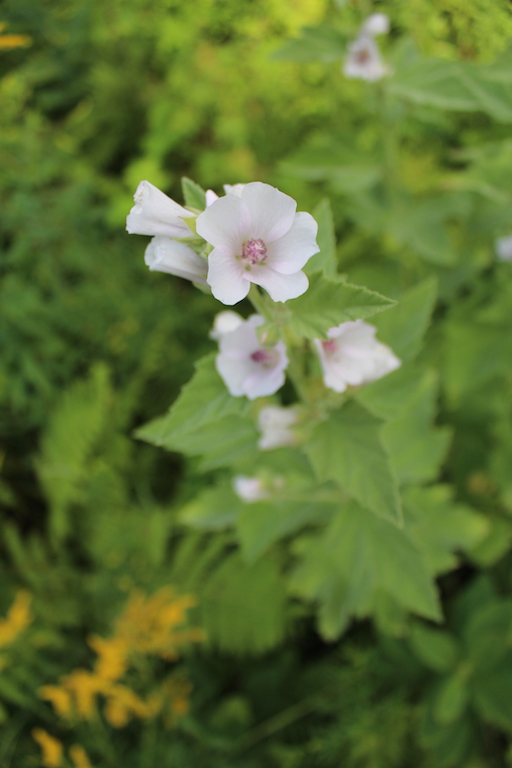
Growing Marshmallow from Seed
Though my extremely neglected marshmallow seedlings matured to produce thriving perennial plants, they’ll obviously do better with actual care.
Marshmallow seeds can be a bit tricky to find, and only a few specialty herb seed companies carry them. I’m fond of Earthbeat Seeds, a local Vermont seed company that sells just about all of my favorite hard-to-find herb seeds, including marshmallow seeds.
The seeds do need to be cold stratified, which means placing the seed packets somewhere cool to mimic winter conditions to trigger germination.
Don’t skip the cold stratification step! This can be done either in the refrigerator or right in the garden if the seeds are planted at the correct time.
Cold Stratifying Marshmallow Seed
Marshmallow seeds require cold stratification for good germination. This means they need cool, moist temperatures to mimic winter conditions.
This prevents the seeds from germinating in the fall only to be killed as tiny seedlings over the winter. A bit of cold storage tells the seeds that winter has passed, and it’s time to get to work.
If you’re planning to start marshmallow seeds indoors, the right moist conditions can be achieved either by storing marshmallow seeds on a moist paper towel or with some moist peat moss, inside a plastic bag in the refrigerator for 3-4 weeks before planting.
Keep them just barely moist, and leave the bag cracked open a bit for ventilation.
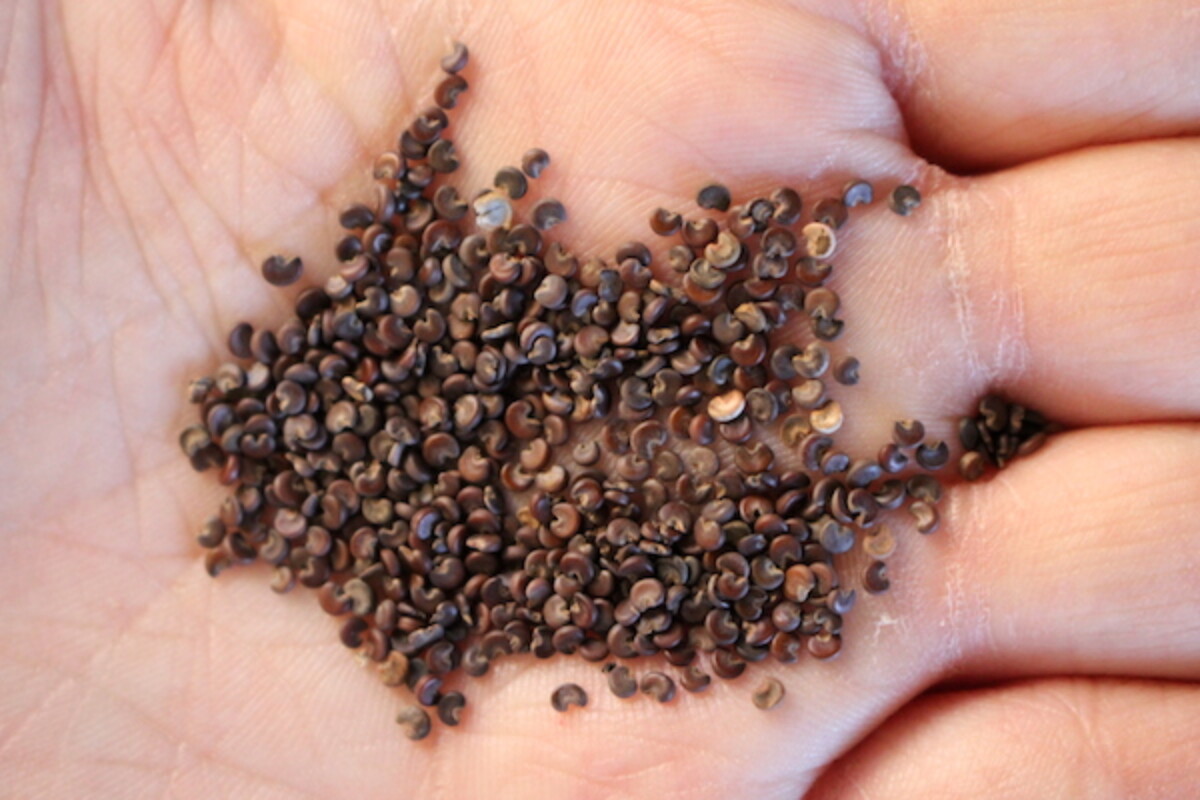
You can also just place the seed packet directly into the refrigerator, no prep is required.
I’ve done it both ways, and I’m not sure there was a noticeable difference in germination rates. The first year I grew these, I just threw the seed packet into the door of my refrigerator when my seed order arrived and took it out for seed starting a few weeks later.
Once the seeds have stratified, start them in a moist potting mix alongside your other spring seedlings.
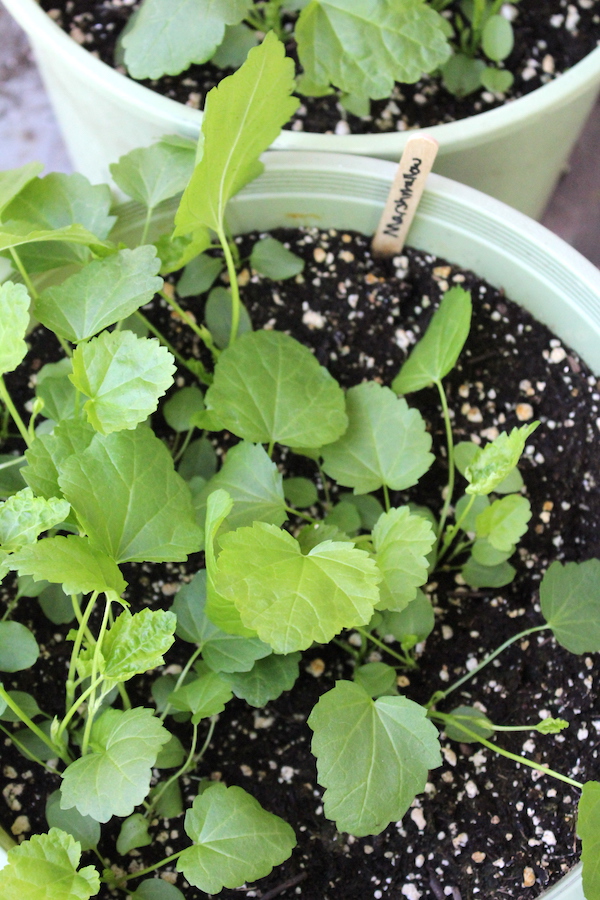
Direct Seeding Marshmallow Plants
Marshmallow can also be direct seeded into the garden.
In areas with a mild winter, just plant the seeds in the late fall and they’ll germinate the following spring. In areas with a long cold winter, you can also just plant the seeds very early in the spring, as soon as the soil can be worked.
Here in Vermont, there are at least 6 weeks of very cool temperatures in the spring before the frost-free growing season begins in early June, and the seeds can cold stratify right in the cool spring soil.
Growing Marshmallow Plants from Root Divisions
Marshmallow can also be grown by dividing an existing healthy plant. It’s best to divide marshmallow when the plant is dormant, such as in the fall after that plant has died down. Early spring, before the greens sprout also works, but it can be more difficult to locate the plants this time of year.
Simply insert a sharp spade into the plant and slice down through the root mass. Take one portion of the roots for planting elsewhere, and backfill the space with fertile soil.
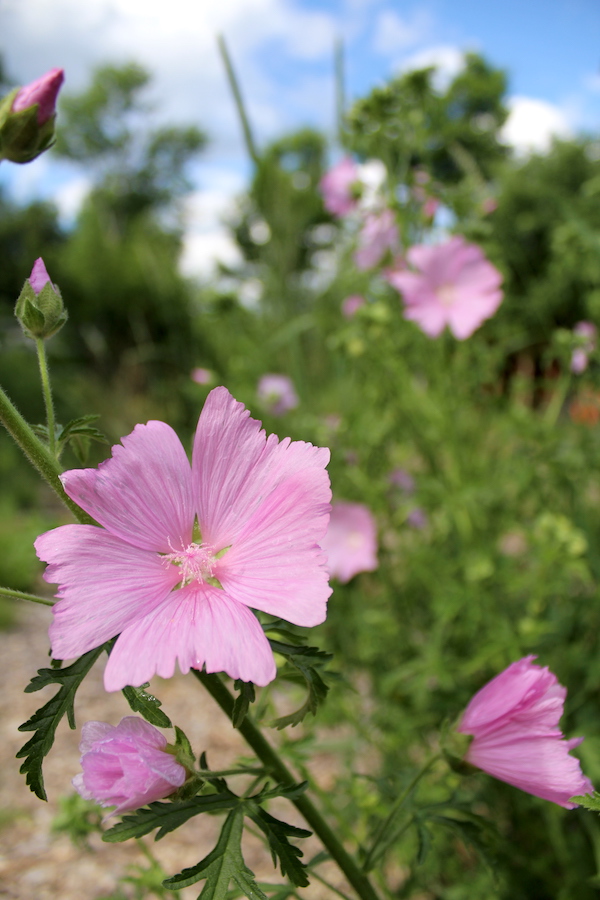
How to Grow Marshmallow Plants
Whether you’ve started them from seed or root divisions, the care is the same.
Plant marshmallow in a moist spot, ideally with heavy soil. It’s called “marsh” mallow for a reason after all. While it wants continuously moist soil, it doesn’t want to grow underwater or in an actual swamp. Ensure good drainage and avoid standing water.
Plant marshmallow plants about 1 foot apart in a well-prepared perennial bed. Mulch heavily in the first year to discourage weeds and hold moisture while the plants are getting established.
So long as you keep weeds back this first year, and the soil stays moist, your marshmallow herbs should get off to a good start. Later in life they’re tall vigorous plants, and they can more easily compete with weeds and other perennials provided the soil stays moist.
In my case, I just stuffed them into a weedy perennial bed with no mulch. Our Vermont summers are always wet, so I didn’t have to water.
The only thing that is absolutely required is cold stratification, and simply placing the packet into the refrigerator a few weeks before planting accomplishes that. Once they’re up, the plants are pretty hard to kill.
Marshmallow plants are hardy to zone 3, so perfect for northern gardeners.
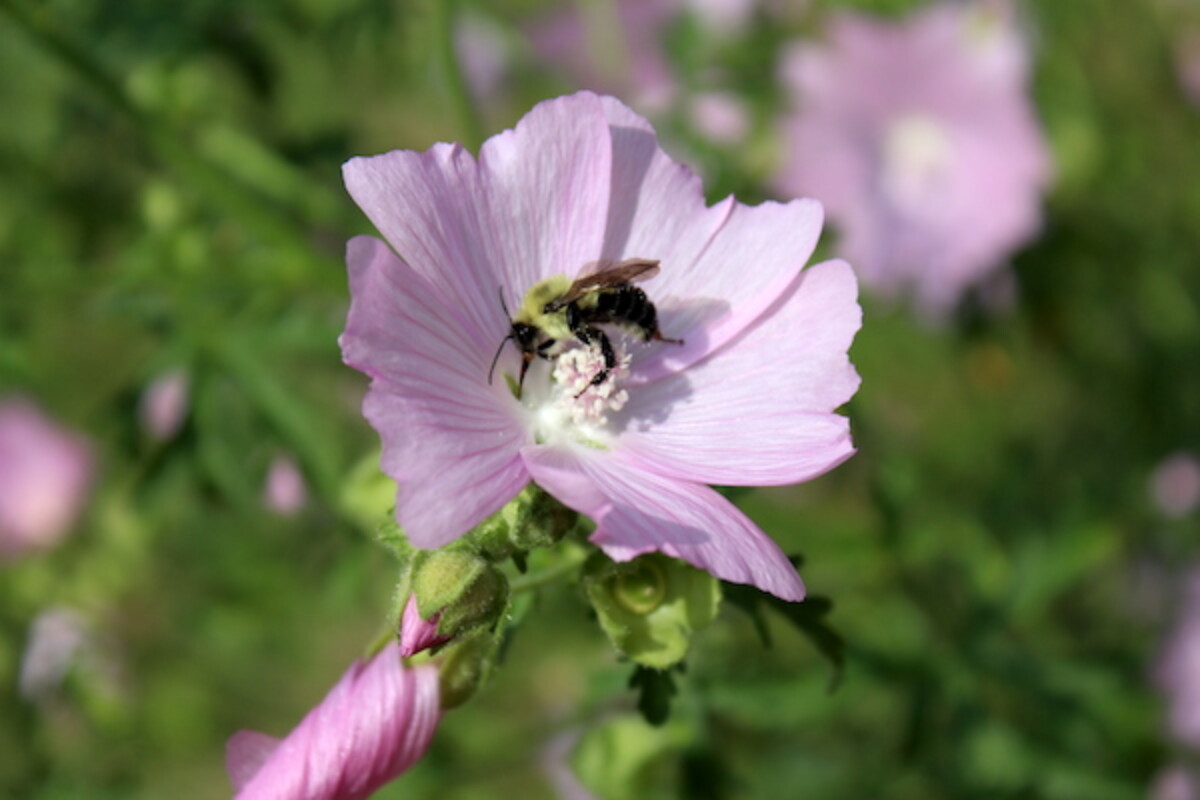
Harvesting Marshmallow Root
If you plan to use marshmallow root for medicine, you can begin harvesting in the 2nd or 3rd fall after planting. Use a sharp spade to harvest the roots in the late fall, after the plant has died back but before the ground freezes. It’s possible to harvest without killing the plant, so take care to replant the crown after removing a portion of the root.
Clean the roots thoroughly, and then chop into pieces and dry them immediately. The dried roots are the most common medicinal preparation, and can readily be purchased online here if you’re not willing to wait 2-3 years for your home-harvested marshmallow root.
In season, the leaves and flowers are also edible greens, and they’re an ingredient in this wild green ravioli as well as this herbal summer punch. They also contain mucilage, but it can be pleasantly added to a dish or salad in small amounts.
How to Use Marshmallow Herb
I plan to make actual herbal marshmallows using just marshmallow herb and maple syrup later this summer. The book Edible Wild Plants: Wild Foods from Dirt to Plate has detailed instructions for using wild or cultivated marshmallow plants to make fluffy marshmallow treats without gelatin.
I’m hoping to just use my own recipe for herbal marshmallows, but substitute a strong marshmallow root infusion for the gelatin/water mixture. Wish me luck?
Marshmallow treats aside, the marshmallow herb is a big part of our winter wellness cabinet and it’s really helpful for both respiratory and digestive issues. The soothing effects make their way all the way down to the urinary tract and can be helpful for UTIs.
According to WebMD, Marshmallow is used for:
- Cough, especially dry coughs
- Mouth and throat irritation
- Breast pain caused by breastfeeding (as a poultice applied externally)
- Skin inflammation, dryness, burns, insect bites, and wounds
- Digestive issues such as ulcers, constipation, and diarrhea
In my house, it comes out tummy aches in my little ones, and it’s my go-to herb for soothing dry coughs.
Herbal Growing Guides
Looking for more plants to add to your medicinal herb garden?
- How to Grow Calendula
- How to Grow Elderberry
- How to Grow Ashwagandha
- How to Grow Tulsi
- How to Grow Astragalus
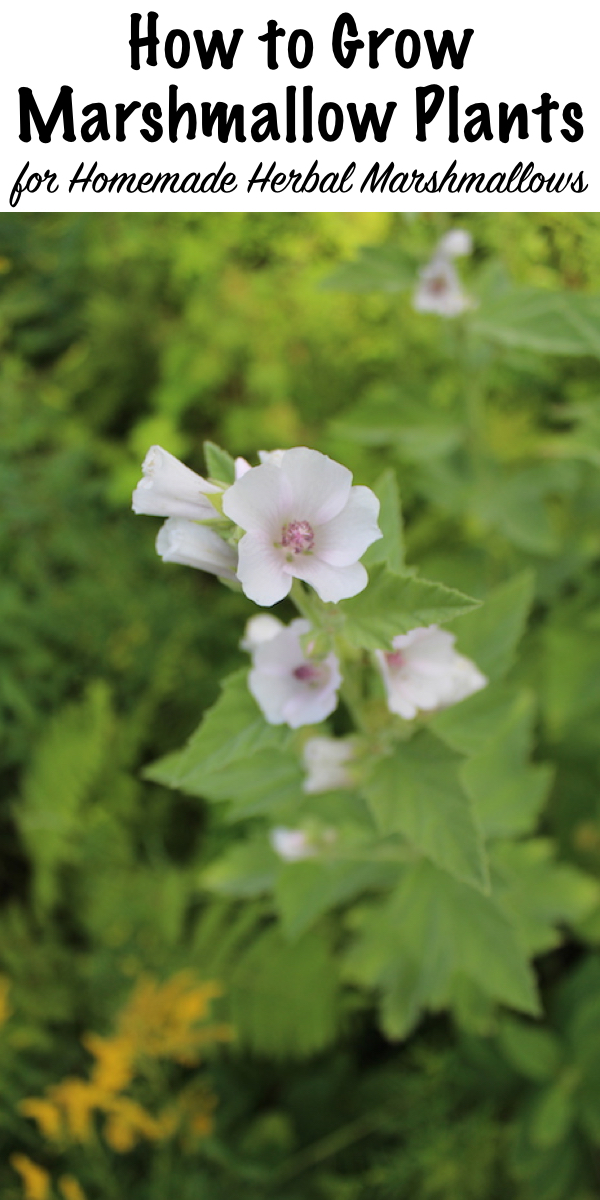
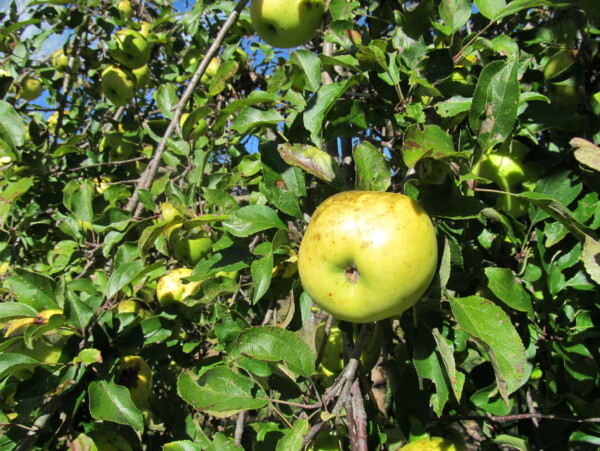













Hi there!
My dad used to grow them just for me. As a child I used to get bad cold/flu. Someone had told my dad about its uses and he started them for me. It helped me. So now I’m getting bad coughs and want to grow my own. The flower was what helped me not the roots or leaves. I wonder how it will grow in central California. My dad was growing them in Kabul Afghanistan.
You should be able to grow them in California, at least as an annual. They do need to be able to go dormant in the winter, so likely you could plant them several times a year (since you don’t really have a winter there, at least not compared to here). That way you could harvest all year round. Make sure you give them rich soil with a lot of compost, and water very regularly. They like moist soil, and don’t like to dry out. Good luck!
I was trying to find out if I could grow Marshmallow in Vermont and as I’m reading your article, you’re from VT! I’d love to ask you some questions if you could please email me, I’d super appreciate it!
Are you wanting to ask questions about the marshmallow? If so, you can just post them here. That way, everyone can benefit from the answers.
Hi,
If I wanted to use marshmallow as an remedy for UTI how would I take/make it?
Thanks for the article. I think I’m going to try growing marshmallow this year.
Many people use marshmallow in teas. You could probably find a good herbal tea recipe online that might be useful for a UTI.
Can I purchase seeds from you to grow this marsh mallow plant?
You can try Fedco or Strictly Medicinal seeds.
I noticed this is an older post. Did you try the marshmallow root tea for making marshmallows? I need a healthy recipe for marshmallow fluff…..wondering if I could take your modified recipe with actual mm root and make it and just not finish it through cooking/baking….
Just FYI: the comment box uses teeny teeny tiny print….difficult for older people to read and fix any spelling issues!!!
We are talking flea sized letters
I’m not sure. I have never thought of trying that. Let us know if you decide to try it.
Oh my goodness, pinch me I must be dreaming. I have the perfect place to start me a Marshmallow Plant Garden, near the lake in our backyard. Close enough (that is) so I won’t fall in while relaxing with one of my gardening books. Asley, I adore your column so much and now, I have one more flower to eat. Blessings.
Wonderful! Marshmallow plants really are spectacularly beautiful, I’m so glad you’re going to grow them =)
Does this mean it could be used as a vegan substitute for gelatine, in more than marshmallows
It’s possible. You may want to experiment with it a bit and see. I would love to know how it works.
I read about this in The Well Being Journal, my original source for almost all of what I know about nutrition and well being. Your article captured my interest in the first paragraph. Thank you for writing it. I will buy some on-line to use now, and then grow my own to use.
You’re welcome. I am so glad that you enjoyed the article.
What are marshmallows’s sun/shade requirements & tolerances?
where can i buy marsmallow seed pls i want to palant too
Oh many places! I’d suggest fedco seeds or strictly medicinal seeds.